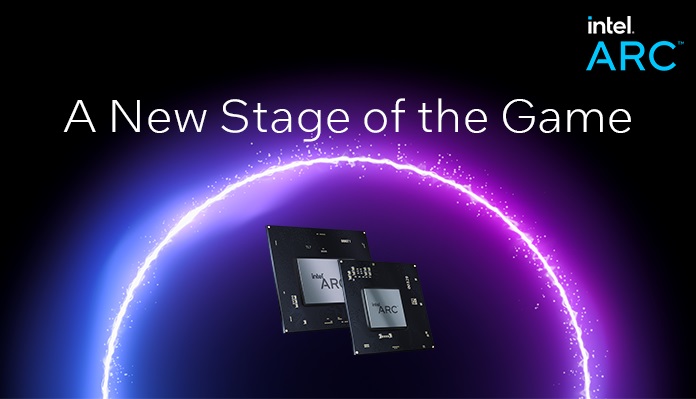If you’ve been waiting for Intel Arc Alchemist to finally receive an official launch date, you can breathe a sigh of relief — Intel announced that the graphics cards will hit the market on March 30.
Unfortunately, we will have to wait a little longer for the desktop versions of the GPU. In line with previous predictions, Intel is launching the mobile version of Arc first, and the desktop models are still yet to receive a release date.

The information comes from a blog post penned by Lisa Pearce, vice president and general manager for Intel’s Visual Computing Group. Pearce outlines the plans for Arc launch, talks about the kind of performance we can expect from these first versions of the GPU, and even mentions the mysterious Project Endgame that Intel hinted at about a month ago.
Intel promised during CES 2022 that it would launch its first line of discrete graphics cards in the first quarter of 2022. It was a bit touch-and-go, considering that the release date was never made official and Intel even removed mentions of it arriving in the first quarter from its website. However, by a hair, Intel managed to make the deadline it has set for itself and will be releasing Arc GPUs shortly.
To celebrate the launch, Intel is hosting an event for the Intel Arc A-series laptop GPUs at 8 a.m. PT/11 a.m. ET on March 30. The event is titled A New Stage of the Game and will likely reveal more about the exact specs of the GPUs, as well as other Intel products.
Intel’s first discrete Arc GPU to become available is going to be the mobile Arc A370M. According to Pearce, it will also be the first to make it into Intel Evo-certified laptops. This implies that it will be power efficient, as one of the requirements of the latest Evo spec calls for devices that can offer at least nine hours of battery life on a full HD display. Despite the presumably long battery life, Intel promises that the Arc GPU will provide double the graphics performance compared to integrated solutions.
To back this claim, the GPU is compared to the Intel Iris Xe that comes with 96 execution units (EUs) and has a clock speed of up to 1.45GHz. Both the Intel Arc and Intel Iris Xe were tested in Metro Exodus, and the 2x performance claim stems from those tests, as Intel measured the average frames per second (fps) during 1080p gaming on medium settings. The systems used were similar, with the Arc being paired with an Intel Core i7-12700H (14 cores, 20 threads), and the Xe with the Core i7-1280P, also with 14 cores and 20 threads. Both laptops had 32GB of 4800MHz memory and were running Windows 11 Pro. Unsurprisingly, the laptop with the discrete GPU had a higher TDP of 40 watts (up from 28).

Most people don’t search for benchmarks of integrated graphics cards, so Tom’s Hardware brings up a similar discrete GPU gauge for the real performance of the Arc GPU. The performance of the Intel Iris Xe with 96 EUs is close to that of the mobile version of Nvidia’s GeForce GTX 1650.
Intel mentions that the performance of its discrete GPU is a partial result of using Intel Deep Link technology, such as Power Share, which balances the power consumed by the laptop across the CPU and the GPU depending on what the user is doing. Considering that the laptops are said to be Evo-certified, power balance and consumption are definitely important topics for Intel to tackle.
In regard to the mysterious Project Endgame, Pearce has clarified that it will involve hybrid cloud gaming of sorts. In her blog posts, she states: “Project Endgame is a unified services layer that harnesses computing resources everywhere – cloud, edge, and your home, to improve your gaming, and nongaming, PC experiences.” Whether it will be good enough to rival Nvidia’s GeForce Now remains to be seen, and perhaps soon, as Intel is planning to bring the project to the public in the second quarter of 2022.
Seeing the launch of Intel Arc receive an official release date is exciting, especially after months of speculation. Many people are wondering why the graphics cards are not simultaneously being released in both desktop and mobile variants. Although Pearce didn’t provide a clear-cut answer, it seems that Intel wants to test the waters with the laptop versions first in order to ensure it can provide desktop users with a solid gaming experience. As much as we’d all like to see more GPUs amid the dire times of the ongoing chip shortage, we can’t argue with that.



